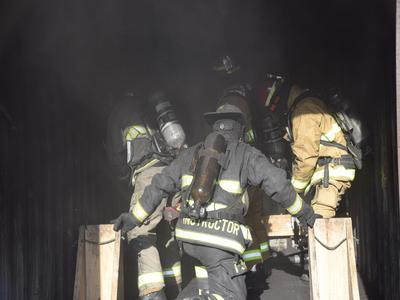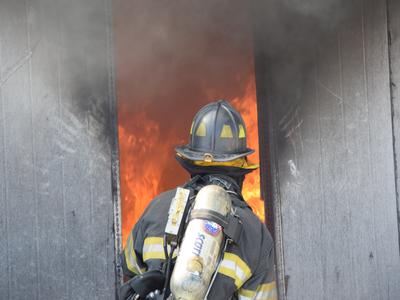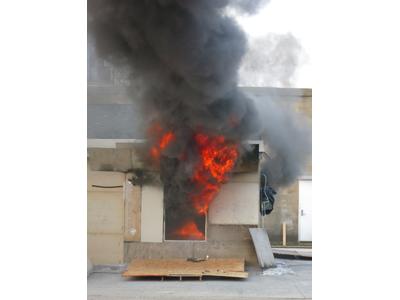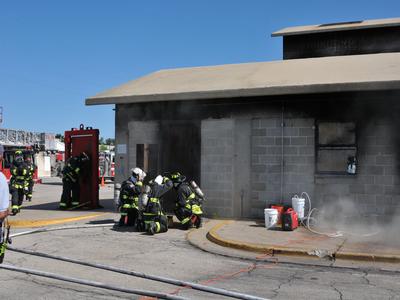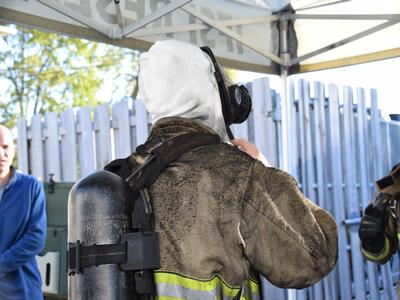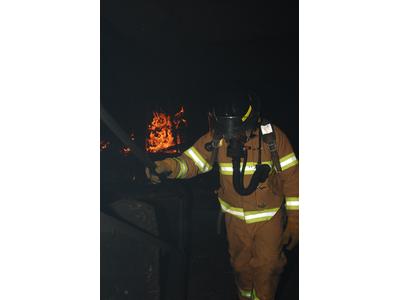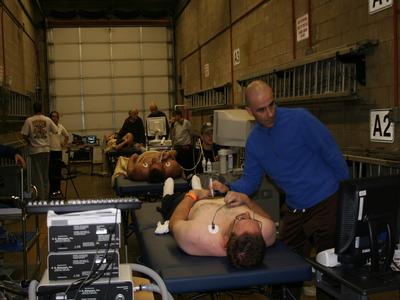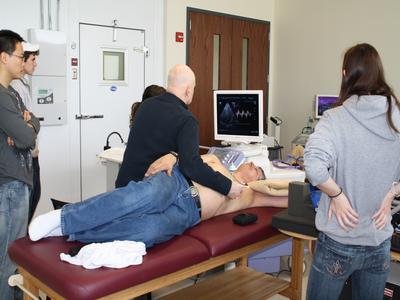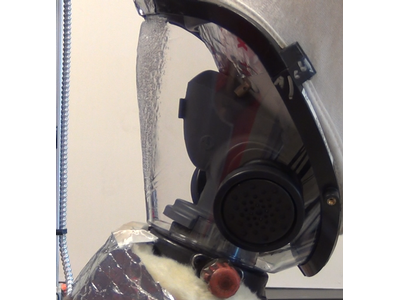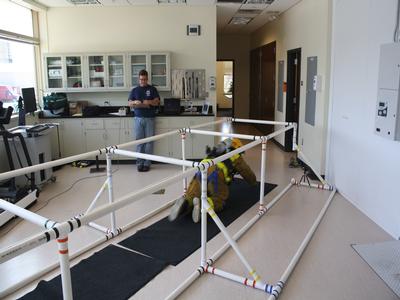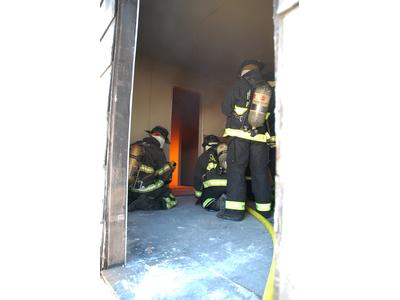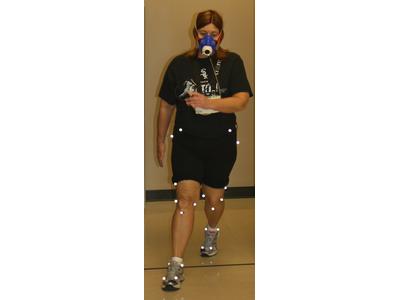Cardiovascular and Chemical Exposures during Fire Training Scenarios
In recent years, the Fire Service has become more aware of the cardiovascular and chemical exposure risks apparent on the fireground. However, it is also important to study conditions and exposure during fire training scenarios. For some firefighters, training fires may represent a significant proportion of their live-fire responses. In order to more fully characterize typical fire training conditions, this study is designed to mirror the Cardiovascular and Chemical Exposure Risk on Today’s Fireground study though utilizing common single story training structures with common training fuels and smoke production sources.
Protection from Chemical, Thermal, and Cardiovascular Risks: Impact of PPE Laundering and Hood Design
The US fire service has taken important steps to better protect firefighters through improvements in personal protective equipment (PPE) and taking more active steps to clean PPE after fires. However, research is needed to understand the impacts and effectiveness of repeated laundering and field decon procedures. In this on-going study, we are working to advance our understanding of PPE protection and the effects of cleaning measures after repeated realistic fire exposures.
New Basis for Evaluation Heat Strain of Firefighting Gear- North Carolina State lead
NC State University Textile Protection And Comfort Center (TPACC) is leading this study with collaborators from IFSI Research and F.I.E.R.O. (Fire Industry Education Resource Organization) to develop a new test method targeted at measuring PPE-related heat strain.
Cardiovascular and Chemical Exposure Risks on Today's Fireground
Fighting fires exposes the human body to a wide variety of hazards, including elevated temperatures and products of combustion that may increase the risk of occupational-related mortality and morbidity. In this study, we collect pertinent physiological data concerning cardiovascular and carcinogenic risks associated with typical cordinated fireground activities in a full scale structure that provides a realistic simulation of a residential fire scenario.
Bullying, Harassment, and Resilience in the Fire Service- National Development and Research Institutes, Inc. lead
IFSI Research is proud to partner with National Development and Research Institutes, Inc. to collect appropriate information about bullying in the fire service and the prevalence, incidence, risk factors, and consequences of bullying behaviors in the fire service. This information will be used to inform prevention and intervention efforts.
Science, Medicine, Research, Technology for Emergency Responders (SMARTER) - Skidmore College lead
Led by scientists at Skidmore College, the SMARTER project (Science, Medicine, Research, Technology for Emergency Responders) is working to reduce firefighter injuries and fatalities through scientific advances, medical knowledge, research findings and technological solutions.
Revolutionizing the Protective Hood: Particulate Protection, Cleaning Effectiveness, and Training Demonstration- North Carolina State University lead
The North Carolina State University Textile Protection And Comfort Center (TPACC) team leads this project that focuses on supporting the continued development of firefighter hoods. IFSI Research's partnership includes studying the impacts hood design on range of motion and hearing.
Cardiovascular and Biomechanical Responses to Firefighting and PPE
As IFSI Research's first Fire Prevention & Safety grant funded project, this study documented laboratory based cardiovascular risk factors among a large cohort of firefighters and investigated the effects of different PPE configurations on physiological and biomechanical responses to live fire firefighting activities. Participants engaged in 18 minutes of firefighting activity in a burn tower that contained live fire after which a battery of cardiovascular and biomechanics measures were collected.
Cardiovascular Function Following Prolonged Firefighting
Firefighters may need to respond to repeated bouts of activity on the fireground and training ground, yet many studies on the impact of firefighting related exertion on the cardiovascular system focus on a single bout of activity. In this study, firefighters' cardiovascular function was assessed immediately before and after a 3-4 hour long period of intermittent live fire training exercises. Additionally, the effectiveness of a nutritional supplement (Vitamin C) to mitigate detrimental cardiovascular responses was studied.
Firefighting and On-Scene Rehabilitation on Homeostasis
While firefighting is known to result in increased cardiovascular and thermal strain, the time course of recovery from firefighting had not been well documented. The acute effects of completing a fire training scenario on a broad array of physiological and psychological measures and several key cardiovascular variables were documented. Importantly, this study provided the first detailed documentation of these measurements' time course of recovery during 2½ hours post-fire fighting. Additionally, we compared two rehab strategies to determine their effectiveness.
Effect of Aspirin on Hemostatic and Vascular Function after Live Firefighting
The effects of acute and chronic aspirin interventions on vascular and hemostatic function before and after live fire fighting activities were characterized in order to assess aspirin's ability to reduce cardiovascular risk post-fire suppression for the segment of the firefighter population that is most at risk for sudden cardiovascular events (over 40 years old). Firefighters between the ages of 40 and 60 were measured before and immediately following 18 minutes of firefighting drills performed in training structures that contained live fire.
Impact of SCBA Design & Fatigue on Balance, Gait and Safety of Movement
Slips, trips and falls and overexertion/strain are typically the two leading causes of fireground injuries, both of which can be impacted by firefighting PPE, in particular the self-contained breathing apparatus (SCBA). The impact of SCBA size as well as duration of firefighting activities on physiological strain, balance, gait, and safety of movement was measured. Firefighters completed an obstacle course designed to test their gait and functional balance prior to, and immediately after the simulated firefighting activities.
Repeated Moderate Intensity Radiant Exposures and Firefighter's SCBA Facepiece Properties
The thermal performance of SCBA facepieces is critical to providing airway protection and visual clarity for firefighters operating on a structure fire. To support study of SCBA, a new laboratory instrument has been constructed to provide repeatable cyclic thermal exposure for facepieces to a variety of radiant heat flux conditions for up to 100 cycles. After thermal exposure, mechanical testing has been conducted on samples harvested from the exposed masks (and those worn in the field for comparison), while other exposed masks were subjected to NFPA 1981 Lens Radiant Heat test. Additionally, air around the facepieces was sampled to determine off gassing characteristics of the masks while at operational temperatures as well as near failure.
Escape Rope Performance and Design in Fireground Applications
To support improved standards for Fire Escape Rope systems, this study developed a series of controlled tests that allowed repeatable quantification of the damaging conditions that escape rope systems are uniquely subjected to in their fireground applications. These tests included the effect of high temperatures on the strength of the rope, the effect of bend radius typical of ledges or tied in knots on dynamic load carrying ability of different ropes and characterizing the force required to payout the system through a decent control device.
Injury Risk and Noise Exposure in Firefighter Training Operations- UM/NIOSH
In collaboration with the University of Michigan, we explored the relationship between noise exposure and injury among firefighters with students undergoing vehicle extrication and structural collapse emergency response training at a highly realistic training facility. Demographics, health status, body mass index, and history of serious injuries were assessed at baseline, and daily activities, injury events, and near-misses were assessed daily using surveys.
Evaluation of Dermal Exposure to Polycyclic Aromatic Hydrocarbons in Firefighters - NIOSH lead
The Health Hazard Evaluation Program of the National Institute for Occupational Safety and Health (NIOSH) carried out a study of fire fighters’ exposure to polycyclic aromatic hydrocarbons (PAHs) and other aromatic hydrocarbons during controlled structure burns at IFSI. This study provide some of the initial evidence that the neck area may be the most heavily contaminated skin on a firefighter's body and that some of the chemicals produced during fires pass through the skin and may be absorbed.
Egress Efficacy of Person with Multiple Sclerosis during Simulated Evacuations
A pilot study was conducted to investigate the ability of persons with multiple sclerosis (MS), as well as those without MS, to walk along a 48 m long path with five different door configurations and various opening hardware and closure mechanisms. Tests were conducted both before and after a six-minute walk, simulating a long evacuation path.
.jpg)
